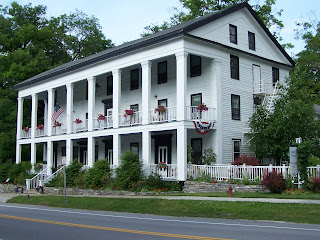
I like wine. I'm not really sure what's "nostalgic" about it, but it sure is nice to share a glass with friends, or with a good book on rainy days. I am lucky enough to live in an area rich with some of the country's (world's?) best wines...at least in my opinion. The Finger Lakes region of New York State is flowing with unbelievably good varieties, and the wineries they come from are full of character, especially with the addition of a little group of wineries we stumbled on a couple of weeks ago.
We recently headed for the Seneca Lake wine trail and stopped at Nagy's winery to pick up a particular bottle we like. What we found there were three new wineries owned by "The Three Brothers". The buildings were not officially opened when we stopped, but they invited us in and let us taste the offerings and experience the individuality of each tasting room.
We were told that each building has a different theme based on the personalities of each brother. Stoney Lonesome is an elegant, upscale tasting room complete with a beautiful toucan, who we got to see only minutes after being introduced to his new home; Passion Feet has a jazzy, colorful and somewhat sensual feel to it's decor; and Rogue's Hollow is a renegade-themed building at the end of a winding dirt road, complete with old, rusty trucks and a run-down shack...well, at least it looks like that until you get inside!!
But the creativity doesn't stop there! The labels on the bottles are just as imaginative, with names ranging from sophisticated, to suggestive, to comedic (yet somewhat humorously offensive)...with great illustrations to match. They were fantastic! We came home with bottles of "Backseat Bounce", "Lonely Seaman", and "White Buck".
Most of the wines are combinations of varieties, and the results are some of the best tasting and most "fun" wines we've come across. I can honestly say that I did not try anything I didn't like. I have a tendancy to choose semi-sweet varieties, but even the drier wines in these tasting rooms appealed to my taste buds!
The impression we left with was one that will lead us back again and again. I predict that this little group of wineries will do very well. They offer great wine and a great atmosphere. There's something for everyone!
For more information and directions to the wineries, visit their link at http://threebrotherswineries.com/


























